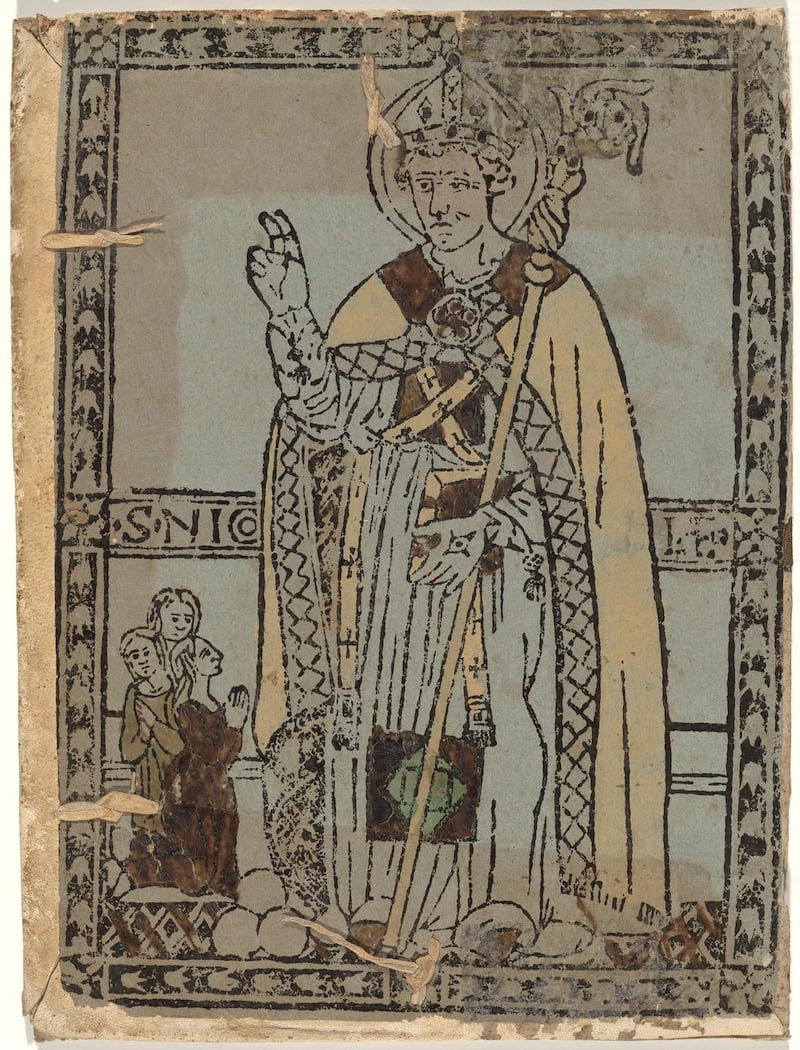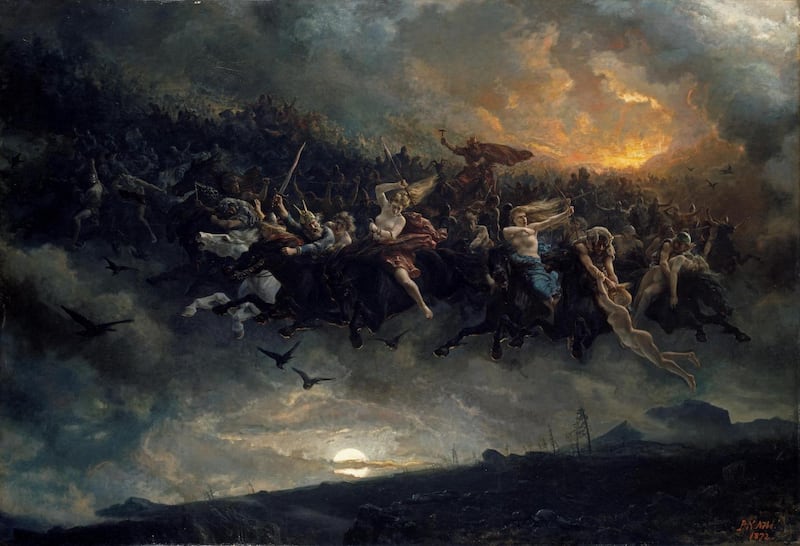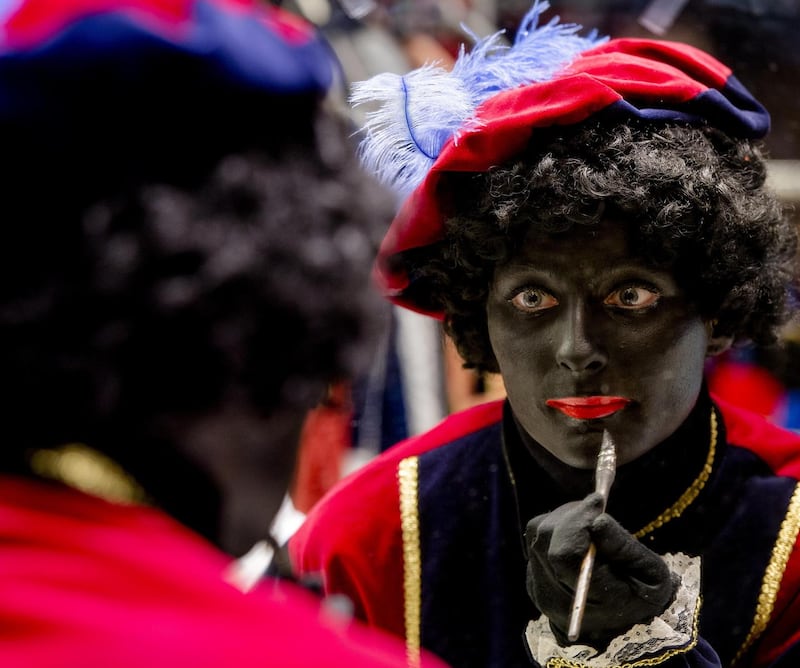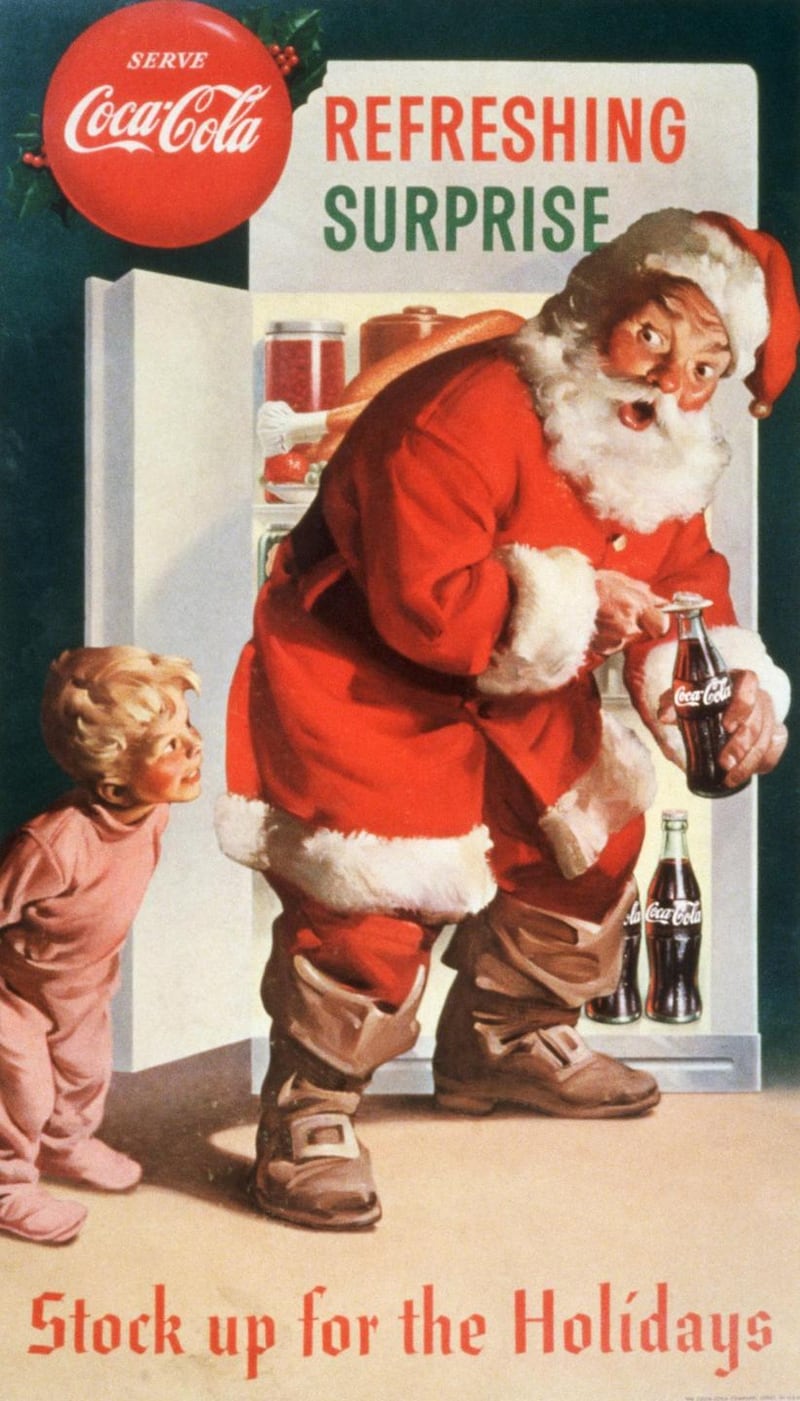He’s had aliases and associates, been cancelled and revived more times than a middle-aged comedian, and found himself caught up in cases of cannibalism, body-snatching and necromancy since he first came to prominence in Myra, in what was then Greece and is now Turkey, 1,750 years ago. But just how did Santa Claus go from all that to the merry old sod we know and love today?
Back then he went by the name Nicholas; following the death of his parents from the plague, he gave away his entire fortune, kickstarting his reputation for being a fabulous gift-giver. One of these generous acts helped save a trio of virgin sisters from a life of sex work, when he left gold in their stockings, which had been hung out to dry overnight. This is how he became the patron saint of sex workers, unmarried women and, later, prisoners, sailors, brewers, archers and wolves.
He also ended up the patron saint of children – and the way it happened sounds more like a scene from Silence of the Lambs than Miracle on 34th Street. Dropping into a local tavern, he realised the pickled meat offered to him as a salty snack was the remains of three boys whose father had sent them to enrol at a local religious boarding school but who had been butchered by the innkeeper and his wife during a dreadful famine. St Nicholas not only revived the children but also got the innkeeper to repent, so gaining the first of many dubious sidekicks, Père Fouettard, who dispenses lumps of coal and whips naughty children.

Santa cast off his corporeal form on December 6th, 343, after which his popularity increased and he rose to become perhaps Europe’s favourite saint. He started co-opting the power of pre-Christian gods, like the Norse god Odin, whose long white beard inspired his own and whose eight-legged horse, Sleipnir, would give St Nick the idea to use reindeer to deliver the presents made by his elves, initially on his feast day but later on Christmas Eve.
In the 11th century, the closest thing our ancestors had to Disneyland was the resting place of religious icons. So when Myra fell to the Turks, a Renaissance version of the space race was launched by multiple Italian cities, which all wanted to get their hands on St Nick’s remains – and, by proxy, the tourist doubloons. The port city of Bari won, and to this day the city celebrates the arrival of his bones each May. But parts of his skeleton have been scattered around the world. Some bones are even believed to be held in Kilkenny.

During a spell in Britain during the 15th century, St Nick went through his party-boy phase, adapting new names like Captain Christmas and Sir Christmas. He was less interested in gift-giving at this time and more interested in bringing joy to the world by encouraging people to eat, drink and be merry to mark the birth of Christ. That did him in with the Puritans, and when European Protestants threw themselves a Reformation they tried to follow suit, so loath were they to allow their flock to keep up their Catholic idolatry. The Christ Child was forced into labour in his stead – but struggled to deliver gifts because of his size. So he was given demonic sidekicks who punished children who didn’t say their prayers.
This didn’t last and St Nick was then allowed back behind the sleigh. But the nasty retinue of sidekicks remained. Krampus, Schmutzli and Zwarte Piet, who dress up in blackface and threaten to abduct children and whip them with sticks, are just some of the unsavoury folk who still make up part of Santa’s international posse.

Most saint's days would eventually go the way of the MiniDisc player, but nothing could dent the power St Nick had over the human imagination, particularly in the Netherlands, where he was known as Sinterklaas. Dutch emigrants brought the feast day with them when they emigrated, in the 17th century, to New York, where our American brethren rechristened him Santa Claus. Writers like Washington Irving stripped him of his religious identity and cured him of his almost sadomasochistic taste for discipline, while Clement Clarke Moore discovered the names of eight of his reindeer (Rudolph joined the crew only during the great fog of 1939) and put down on paper the first descriptions of Santa as the world still sees him, in 'Twas the Night Before Christmas.
The political cartoonist Thomas Nast started depicting Santy's visits to the troops during the American Civil War and quickly became known as Santa's unofficial portraitist. Acting like a Yuletide Hello magazine, Nast revealed for the first time images of Santa coming down the chimney, reviewing naughty lists, or overseeing his elves hard at work in his workshop. Most famously, he revealed that Santa had made his home in the North Pole, just as the first Arctic explorations were capturing the world's imagination.
Irish children may have contributed to Santa's ruddy cheeks by leaving out a pint of the black stuff to warm him in his sleigh
In 1849 Santa settled down with Mrs Claus, although we didn't find out her name until 1889, when Katharine Lee Bates, author of America the Beautiful, revealed that it was Goody (as in goodwife), in her poem Goody Santa Claus on a Sleighride.
It was at this time that Santa took on a more capitalist bent. He started hanging out in department stores, charging for the honour of meeting – and later having your picture taken with – him. He even became associated with Coca-Cola, which plastered Moore’s image of him – a portly man, in a red suit, with ruddy cheeks, unlike the rake-thin bishop or elfin figure of yore – all over the world.

His weight gain is attributed to the Depression-era penchant of leaving out cookies and milk, a move from the Scandinavian tradition of just leaving carrots and hay out in your shoes for Sleipnerm. Irish children may have contributed to Santa’s ruddy cheeks by leaving out a pint of the black stuff to warm him in his sleigh.
Some people object to Santa’s American makeover – in 1951 clergymen burnt his effigy in France. Is it any wonder he has taken on so many shapes and sizes over the years and gone to great lengths not to be seen?
But while modern technology lets us track his travels on GPS, Santa, St Nick or whatever else you want to call him continues to have one essential purpose: to inspire our imaginations and foster a sense of goodwill and hope at a time of year when it would otherwise be difficult to muster either.










